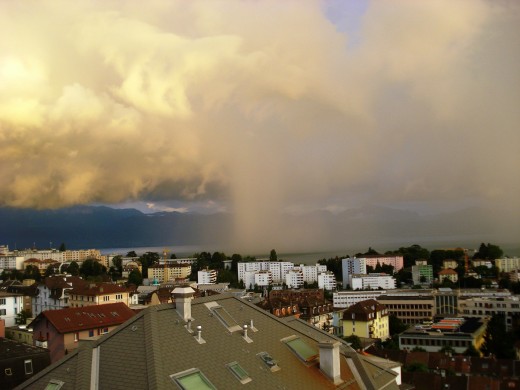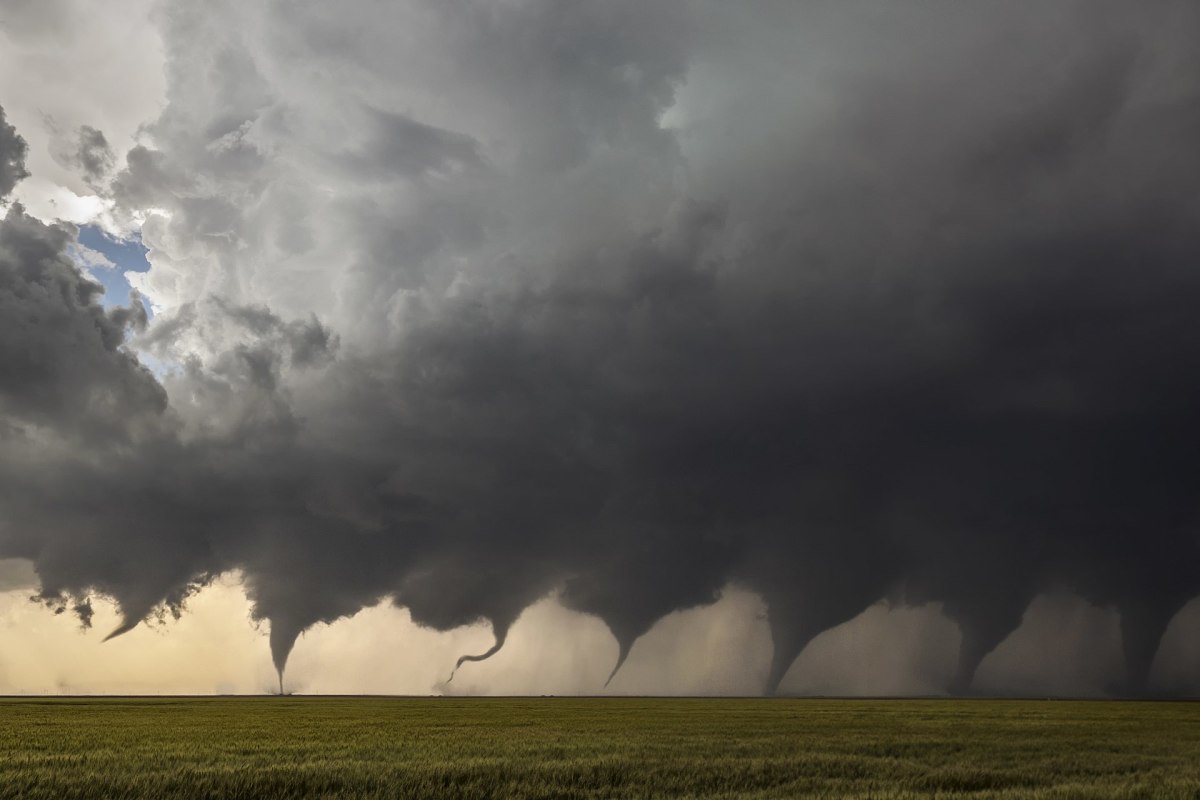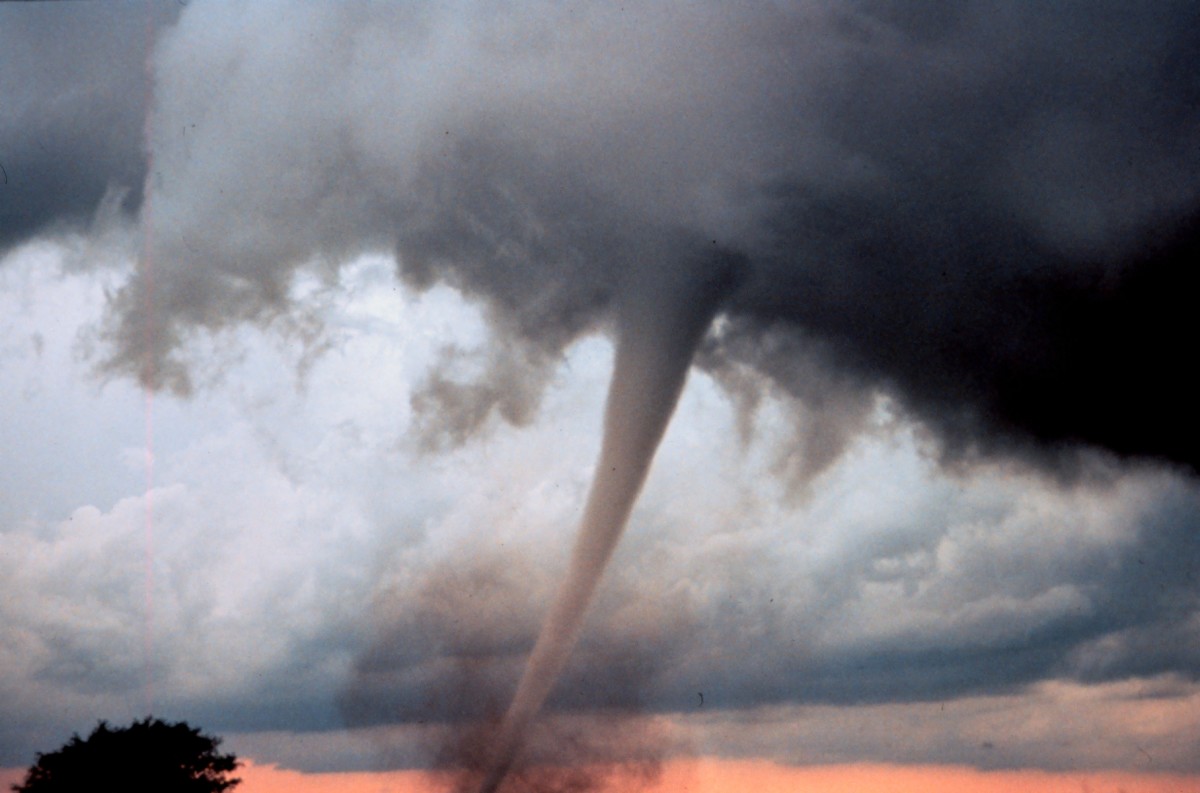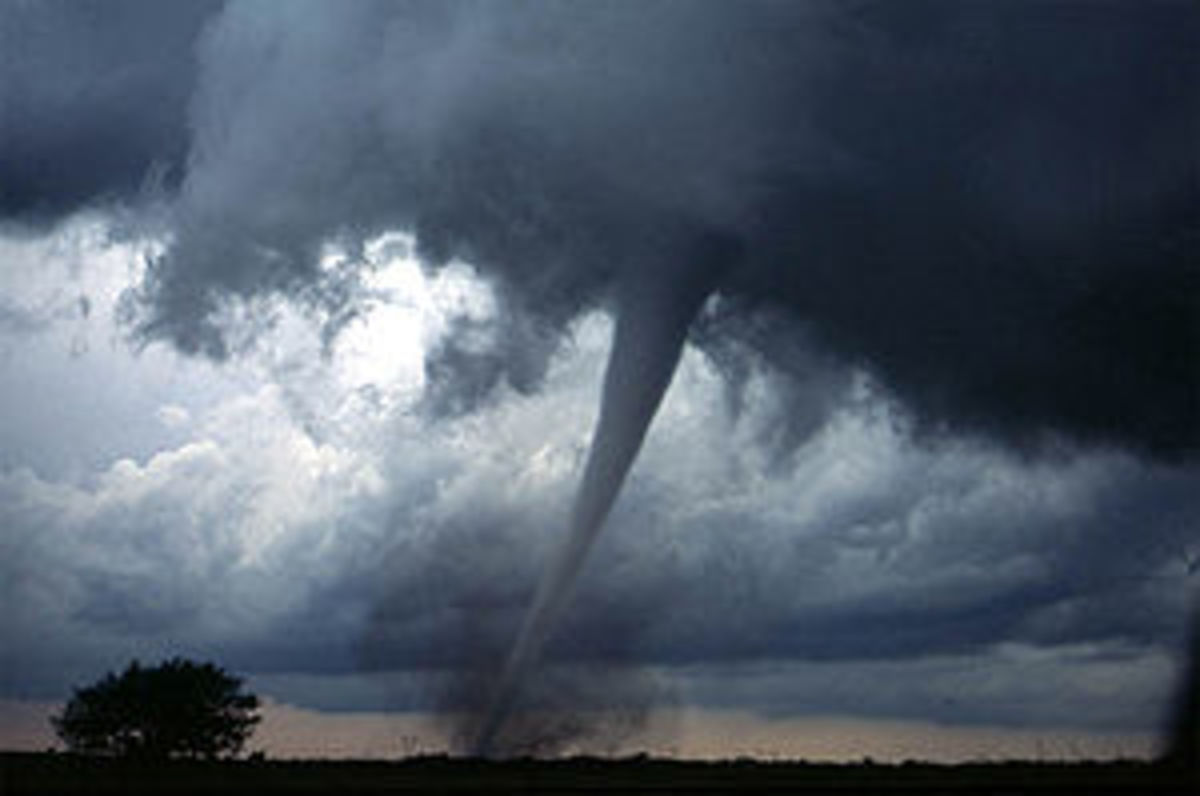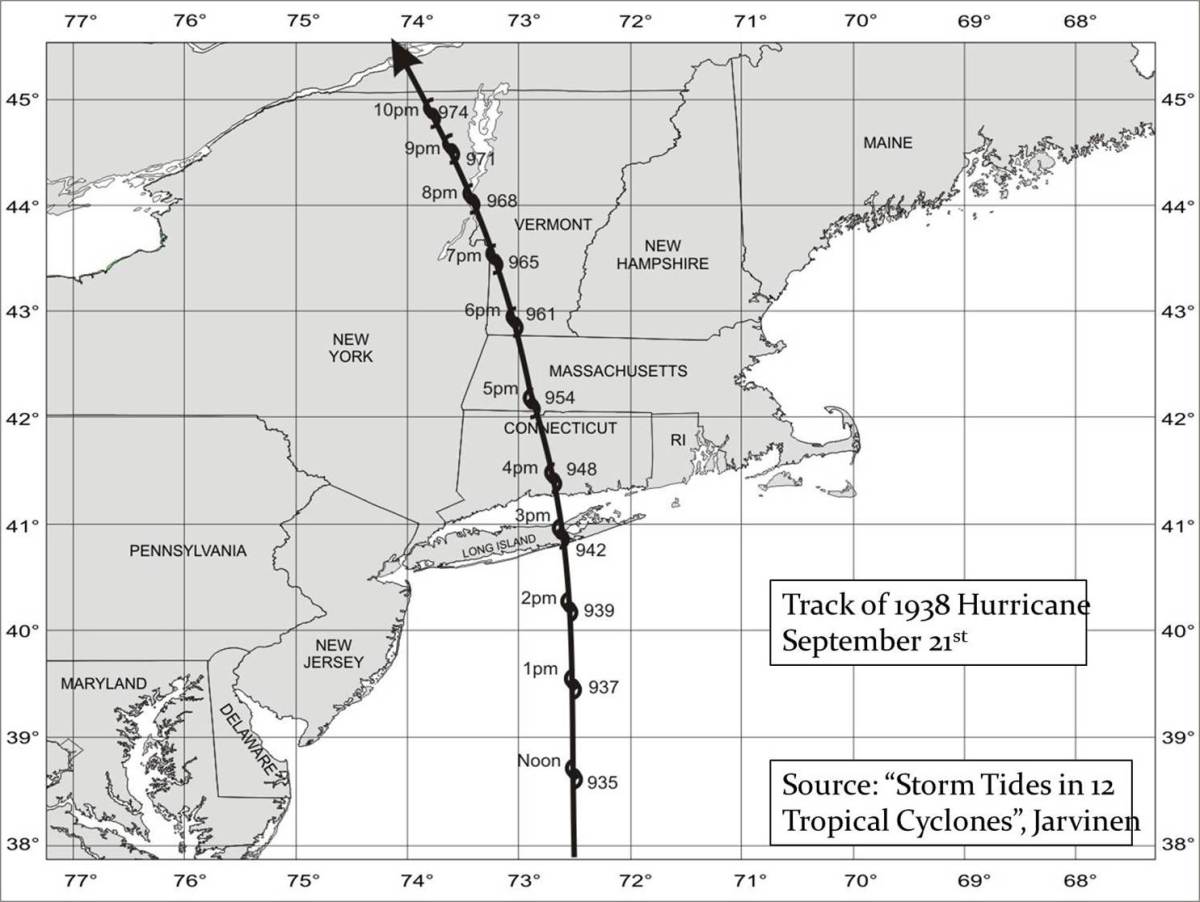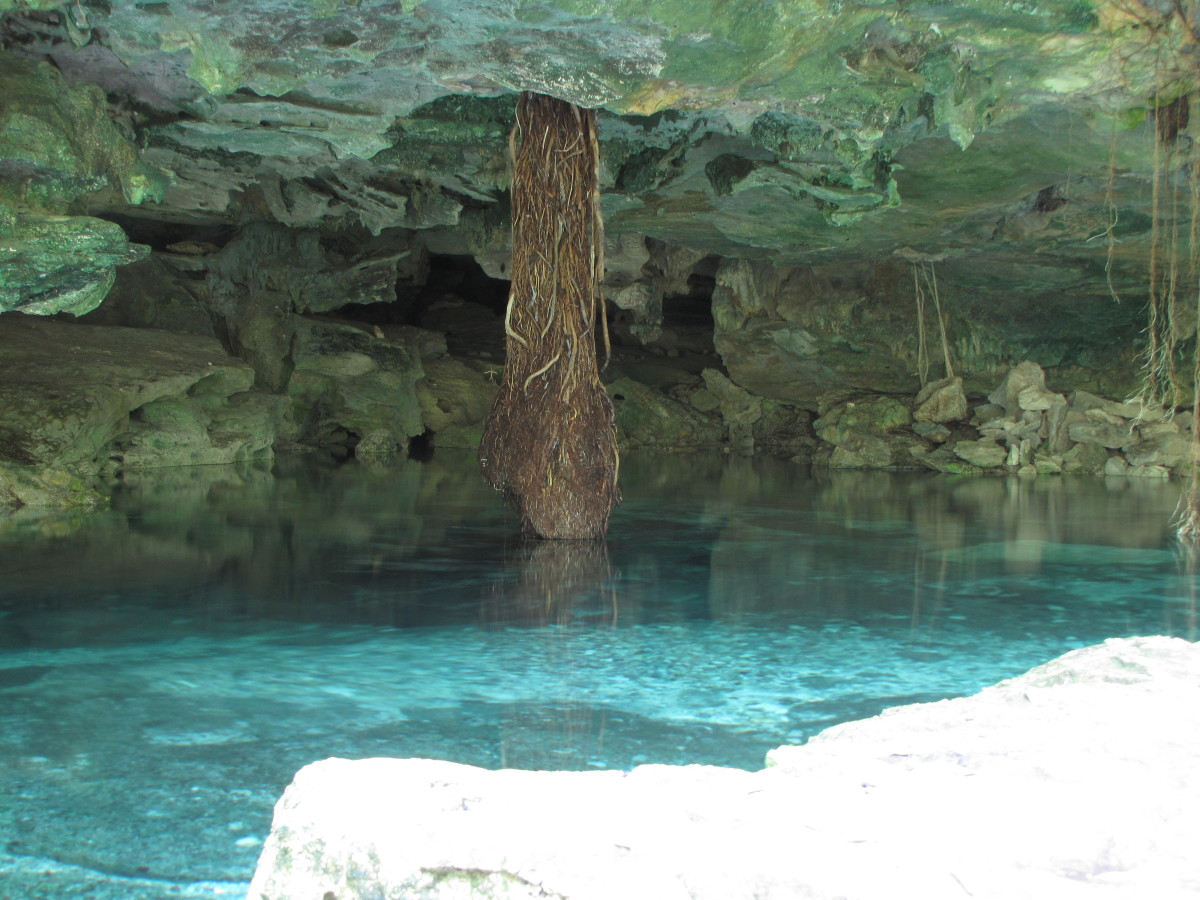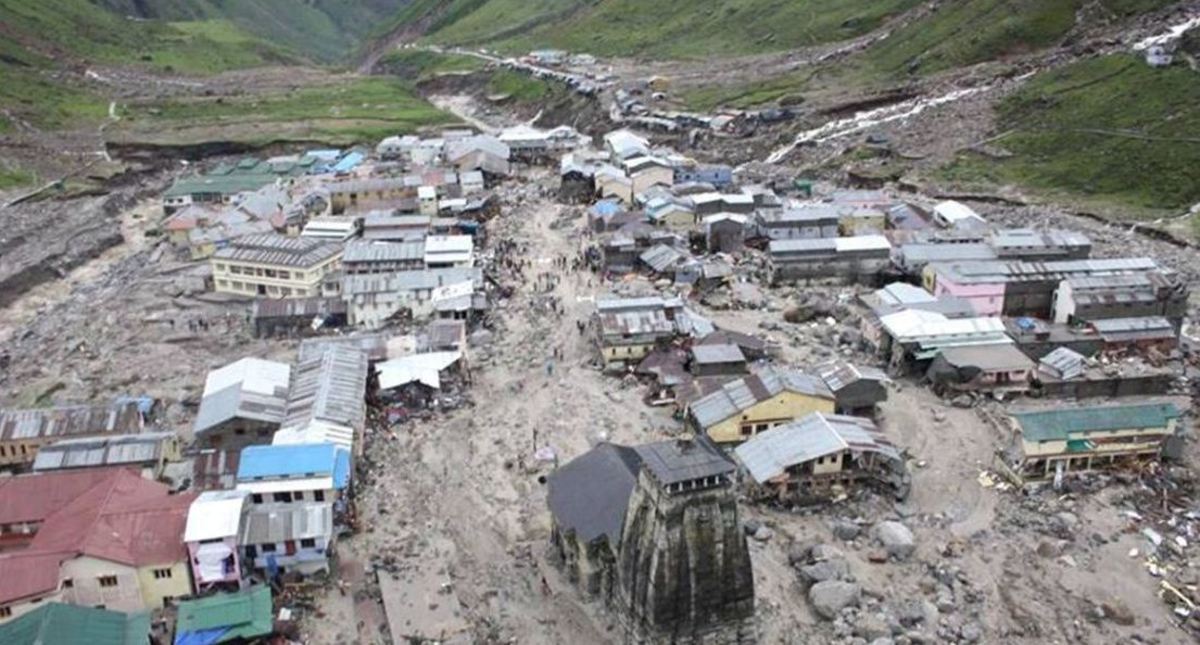How Tornadoes Are Formed
Video Animation
A tornado in general is a rotating column of air which is normally accompanied by a funnel-shaped downward extension of a cumulonimbus cloud (Cb), a type of cumulus cloud. It has a mass of several hundred yards in diameter and the narrow column of air rotates very fast and leaves enormous devastation in its route. A tornado whirls destructively usually at speeds of up to 300 miles per hour (480km).

The devastation created by tornadoes occurs because of the harsh violent winds and partly to the very low pressure. This sort of development has the effect of causing buildings to explode outwards because the pressure outside exceeds that of inside the building and although a tornado may affect an area only 100-160 meters across, the outcome is total destruction.
Tornadoes are often unpredictable in their manner and behavior and can lose contact with the ground or retrace their path routes. When a tornado moves out over to the sea, and once the tunnel has connected with the waves, a waterspout is developed. Basically, a waterspout is somewhat similar to a land tornado, it is funnel-shaped or a lesser whirlwind occurring over water and resulting in a whirling column of spray and mist.
A tornado develops around a center of very low pressure with high wind speeds blowing anticlockwise and with a violent downdraft. The common appearance of a tornado is of a funnel or a swirling snake-like column filled with cloud and it's usually no more than 140-160 meters across.
The exact manner in which tornadoes form is not fully acknowledged although it involves the interface of warm moist air with dry cooler air and an inversion of temperatures with some event acting as a trigger, and sometimes believed to be an intense cold front. These sort of conditions are found in several countries at mid to low latitudes.
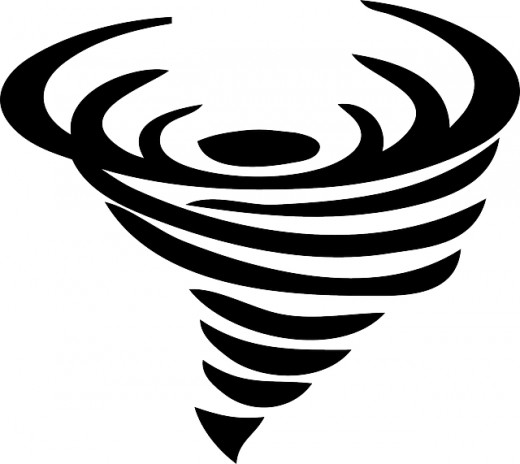
As we've learned, tornadoes are very powerful whirlwinds that move in an irregular pattern, making them hard to track and almost similar to hurricanes. Tornadoes are most common in the USA especially in the mid-west where they are known as twisters. Over 400 may appear during spring and early summer. Nothing is safe in the path of a tornado, which might travel 200 kilometres (125 miles) before running out of energy in the mid-west regions of the United States. Tornadoes are short-lived, lasting for no more than two hours and perhaps as little as 10 minutes, but in that time they can cause chaos and destruction. Cars, trees and animals can be sucked into the air and buildings may explode outwards as the air pressure outside drops alarmingly as a tornado rips its way across the countryside devastating everything in its path.
Waterspouts
Waterspouts can form in a variety of conditions be it summer or winter, night or day, on cold days or on hot days. From a cloudy sky a funnel-shaped mass of air descends towards the water surface. Beneath it the water begins to foam and spray rises to meet the funnel. Eventually, the rising water and descending air meet and the waterspout is formed.
The spout may move slowly across the water surface or it may travel at speeds of 80 km/h (50 mph). Within the spout the wind may whirl at up to 320 km/h (200 mph). A tornado passing over a mass of water can turn into a waterspout, during which time it can wreck small boats, before becoming a tornado again when it returns to dry land. Basically, a waterspout that forms over or when it moves from land to water is known as 'tornadic waterspouts. The characteristics are almost identical to a normal land tornado. There is also no association with thunderstorms and waterspouts in question. Sailing ships are particularly vulnerable to waterspouts - a small ship can be capsized or wrecked by the whirling winds and sudden deluge of water ripping off masts and sails.
